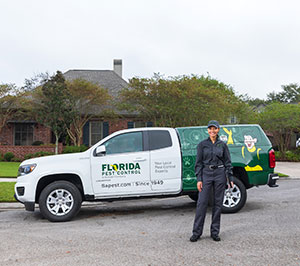Bed Bug Therapy Breakdown: Comparing Chemical Vs. Non-Chemical Solutions
In the world of pest control, especially when managing the persistent problem of bed pests, the choice between chemical and non-chemical therapy remedies can be a critical one. Both techniques supply distinct advantages and disadvantages, affecting factors such as efficiency, safety factors to consider, and total cost. By taking a look at the nuanced information of each approach, a more clear understanding of which course to seek in dealing with a bed bug problem can be obtained.
Performance of Chemical Therapies
Chemical therapies for bed bug problems have been extensively acknowledged for their quick and powerful efficiency in eradicating these insects. When taking into consideration the effectiveness of chemical treatments, it is crucial to comprehend that they can give a complete and fast remedy to a bed pest trouble. Specialist pest control men typically count on insecticides to target bed insects at different stages of their life cycle, consisting of grownups, eggs, and nymphs. These chemicals commonly function by interfering with the bed bugs' nerve system, bring about paralysis and ultimate fatality.
In addition, chemical therapies have the advantage of providing recurring impacts, implying that they can proceed to eliminate bed pests also after the first application. This residual activity is especially valuable in combating any kind of possible re-infestations. Furthermore, the rapid activity of chemical treatments can bring alleviation to individuals encountering extreme bed insect problems, enabling them to regain control of their home rapidly.
Security Concerns With Chemical Solutions
One critical element that calls for careful factor to consider when utilizing chemical solutions for bed insect treatment is making sure the safety of owners and the environment. While chemical therapies can be reliable in eradicating bed insects, they might posture risks if not managed effectively. One of the primary security worry about chemical remedies is the possible damage they can cause to human health. Exposure to specific chemicals utilized in bed insect treatments can lead to respiratory concerns, skin irritability, or various other adverse reactions, especially in people with pre-existing conditions or level of sensitivities. Furthermore, inappropriate application or dose of chemical pesticides can cause poisonous deposits remaining in the treated area, posturing long-term health risks to occupants.
Additionally, the environmental impact of chemical remedies is an additional considerable consideration. Some pesticides made use of in bed insect treatments may be hazardous to helpful bugs, wildlife, and ecosystems if they seep into the soil or water supply. It is vital to utilize chemical treatments deliberately, complying with safety standards, and thinking about less poisonous options to reduce these threats and make sure the efficient and risk-free management of bed pest invasions.
Benefits of Non-Chemical Strategies
Taking into consideration the possible security issues and ecological effect linked with chemical remedies for bed pest therapy, exploring non-chemical methods provides an appealing choice with several distinct benefits. Non-chemical treatments are ecologically pleasant, as they do not contribute to air or water air pollution, making them a sustainable selection for parasite control.
Additionally, non-chemical remedies can be efficient in targeting bed bugs, consisting of hard-to-reach locations where chemical treatments might not pass through - A1 pest control services charlotte. Approaches such as heat therapy, vacuuming, heavy steam cleaning, and bed mattress encasements give extensive removal without the usage of unsafe chemicals.
Limitations of Non-Chemical Treatments

Furthermore, check out this site non-chemical treatments typically call for several applications to accomplish effective obliteration. This can be taxing and might not always guarantee total elimination of all bed bugs and their eggs, specifically in hard-to-reach or covert places.
Additionally, the success of non-chemical therapies greatly depends on proper implementation and thoroughness, which can be challenging for individuals without specialist expertise. Poor application of non-chemical methods might result in incomplete removal, causing relentless infestations and the demand for additional therapies.
Therefore, while non-chemical therapies have their benefits, it is vital to recognize these constraints and consider them when identifying the most effective approach for handling bed bug problems.
Price Comparison: Chemical Vs. Non-Chemical Options
Provided the constraints linked with pesticide store near me non-chemical therapies, a crucial aspect to assess in the context of bed insect monitoring is the cost contrast in between chemical and non-chemical options. In comparison, non-chemical therapies like warm therapy or heavy steam can be extra expensive, with expenses varying from $1,000 to $6,000 for an entire home. While the preliminary expense of chemical therapies might seem lower, numerous therapies may be needed to fully eliminate the problem, possibly raising the overall expense.
Verdict

Thinking about the prospective safety issues and environmental influence connected with chemical options for bed bug treatment, exploring non-chemical methods provides an encouraging option with several unique benefits.Given the cal pest control restrictions connected with non-chemical therapies, an essential facet to assess in the context of bed pest administration is the price contrast in between chemical and non-chemical choices. In comparison, non-chemical therapies like heat therapy or steam can be extra expensive, with prices ranging from $1,000 to $6,000 for a whole home. While the initial expense of chemical therapies may appear lower, numerous therapies may be called for to totally get rid of the infestation, possibly increasing the general cost.In final thought, when contrasting chemical and non-chemical bed bug therapy alternatives, it is vital to take into consideration effectiveness, safety, benefits, constraints, and cost.